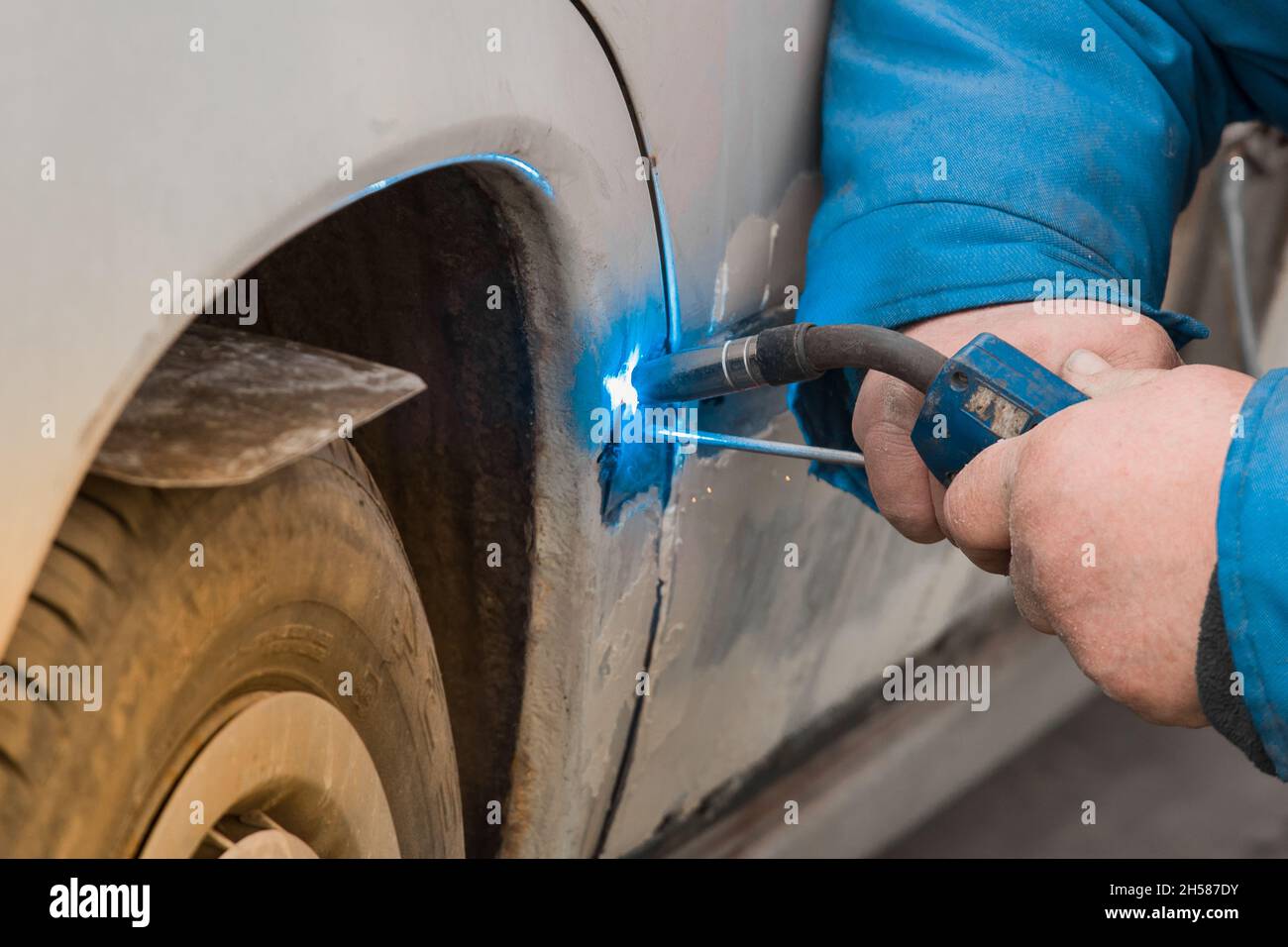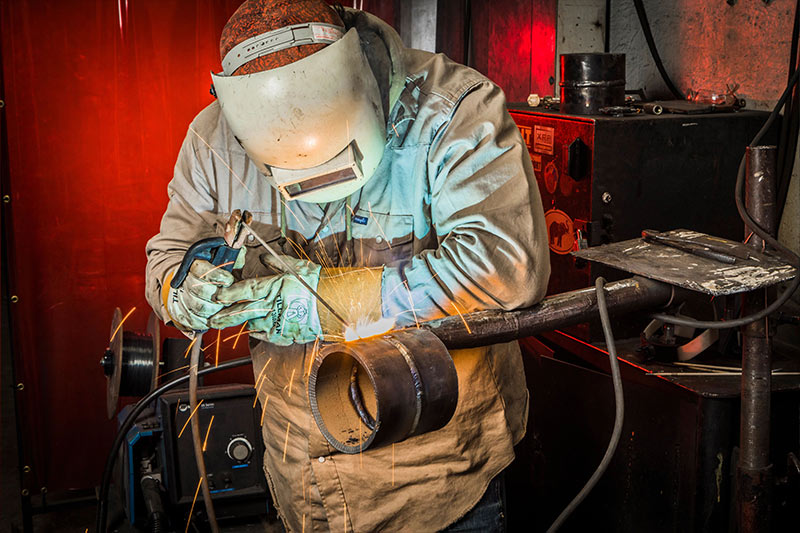All Regarding Welding: Trick Insights Into Techniques and Best Practices for Success
Welding incorporates a selection of techniques, each suited for certain materials and applications. Comprehending these techniques, such as GMAW, SMAW, and TIG, is necessary for accomplishing excellent outcomes. The appropriate devices and safety and security methods can not be overlooked. As prep work and fixing play vital roles in the welding procedure, grasping these aspects can substantially improve the high quality of the end product. What are the crucial aspects that guarantee an effective weld?
Understanding Different Welding Strategies
Welding methods incorporate a variety of methods, each fit to certain applications and materials. Among one of the most common techniques are Gas Metal Arc Welding (GMAW), Shielded Steel Arc Welding (SMAW), and Tungsten Inert Gas Welding (TIG) GMAW, additionally known as MIG welding, is prominent for its speed and versatility, making it ideal for thin materials. SMAW, or stick welding, is preferred for its simplicity and performance in exterior settings, particularly with thicker steels. TIG welding offers accuracy and control, making it appropriate for detailed work and non-ferrous steels (Montana Mobile Welding and Repair). Each technique has its distinct advantages and considerations, permitting welders to choose the most effective technique based on the job's needs, product type, and desired end results. Recognizing these strategies is essential for successful welding
Necessary Welding Tools and Tools
While different welding techniques call for details abilities, the right devices and devices are equally necessary for achieving high quality outcomes. Essential welding tools includes welding equipments, which vary relying on the strategy-- such as MIG, TIG, or stick welding. Safety gear, including helmets, handwear covers, and aprons, warranties safety and security and comfort throughout the procedure. On top of that, fixtures and clamps assist protect materials in position, making certain precision in welds. Consumables like welding poles, cable, and shielding gas are additionally essential components that affect the top quality of the weld. In addition, devices such as grinders and cutters facilitate surface area preparation and post-weld ending up, adding to an expert result. Buying top quality equipment ultimately boosts the effectiveness and effectiveness of welding jobs.
Safety Practices in Welding
Correct safety and security techniques are crucial in the welding sector to safeguard employees from potential hazards. Welders should put on appropriate personal protective devices (PPE), consisting of safety helmets with correct shading, gloves, and flame-resistant clothes. Ample air flow is vital to lower direct exposure to damaging fumes and gases created during the welding procedure. Furthermore, workers must be educated in the appropriate handling of welding tools to avoid mishaps. Fire precaution, such as keeping combustible materials far from the welding area and having fire extinguishers conveniently offered, are needed. Routine inspections of tools and workspaces can aid determine prospective hazards prior to they result in mishaps. By sticking to these security methods, welders can produce a more secure working setting and lessen dangers related to their profession.
Readying Materials for Welding
Preparing materials for welding is an important step that substantially affects the top quality and integrity of the end product (Belgrade Fabrication). Correct prep work involves cleansing the surfaces to eliminate impurities such as dust, oil, and corrosion, which can endanger the weld. Methods such as grinding, fining sand, or utilizing solvents are generally employed to achieve a tidy surface area. Furthermore, making sure that the products mesh snugly is vital; gaps can result in weak welds. It's likewise important to take right into account the placement and positioning of the components, as this will impact the ease of welding and the last end result. Finally, picking the suitable filler material and making sure compatibility with the base steels is essential for attaining strong, resilient welds
Tips for Getting High-Quality Welds
Attaining high-grade welds calls for interest to information and adherence to finest practices throughout the welding process. Appropriate joint prep work is essential, guaranteeing surfaces are totally free and tidy get more from impurities. Picking the suitable filler product and welding strategy based upon the base steels is critical for perfect bonding. Keeping regular traveling rate and angle while welding can avoid problems and promote harmony. In addition, controlling warm input is necessary; too much heat can result in warping and deteriorated joints. If necessary, regularly checking the welds throughout the process enables for prompt modifications. Ultimately, employing appropriate post-weld treatments, such as cleansing and anxiety relief, can boost the resilience and integrity of the weld, inevitably ensuring an effective outcome.
Troubleshooting Typical Welding Issues
Welding often presents challenges that can affect the quality and honesty of the end product. Typical problems such as porosity, irregular weld beads, and overheating can emerge, each needing details repairing methods. Comprehending these troubles is essential for welders to improve their abilities and attain excellent results.
Porosity Troubles Discussed
Porosity can frequently be forgotten, it continues to be a critical issue in welding that can compromise the stability of a completed item. Porosity describes the presence of small gas pockets within the weld bead, which can lead and compromise the joint to premature failure. This problem generally arises from pollutants, dampness, or incorrect protecting gas insurance coverage throughout the welding procedure. To reduce porosity, welders should verify that the base products are completely dry and tidy, make use of appropriate securing gases, and preserve regular welding parameters. Frequently examining the equipment and setting can additionally aid identify prospective concerns before they manifest in the weld. Dealing with porosity effectively is crucial for accomplishing strong, resilient welds that fulfill high quality requirements.

Irregular Weld Beans
Inconsistent weld beads can greatly affect the top quality and stamina of an ended up item. Numerous factors contribute to this issue, including improper traveling speed, wrong amperage setups, and irregular electrode angles. When the welder relocates as well swiftly, a bead may appear narrow and do not have penetration, while relocating as well gradually can trigger extreme accumulation. Furthermore, making use of the incorrect amperage can lead to either undercutting or excessive spatter, both of which compromise weld honesty. The welder's method, such as irregular lantern movement, can additionally result in uneven bead appearance. To minimize these troubles, welders should concentrate on maintaining steady, controlled movements and making sure proper devices setups to accomplish harmony in their welds. Uniformity is essential to accomplishing trustworthy and strong welds.
Overheating and Bending Issues
Extreme heat throughout the welding process can cause significant getting too hot and buckling issues, impacting you could check here the architectural honesty of the work surface. These troubles commonly show up as distortion, which can compromise positioning and fit-up, making additional setting up testing. Aspects adding to overheating include the option of welding criteria, such as voltage and take a trip rate, as well as the kind of product being bonded. To alleviate these issues, welders need to preserve constant travel speed and appropriate heat input while monitoring the workpiece temperature level. In addition, pre-heating or post-weld warm therapy can aid alleviate tensions caused by quick cooling - Montana Mobile Welding and Repair Welding. Normal inspection and adherence to best practices are crucial in avoiding overheating and making sure the durability and dependability of bonded structures
Frequently Asked Questions
What Are the Occupation Opportunities in the Welding Industry?
The welding market supplies diverse job possibilities, including settings as welders, teachers, engineers, and examiners. Specialists can operate in production, building and construction, aerospace, and automobile industries, taking advantage of strong need and competitive incomes in different duties.
Exactly How Can I Enhance My Welding Rate Without Sacrificing Top Quality?
To boost welding speed without giving up high quality, one need to exercise reliable strategies, keep equipment, optimize setups, and improve hand-eye control. Normal training and seeking responses can additionally considerably add to accomplishing quicker, high-quality welds.
What Certifications Are Readily Available for Welders?
Countless accreditations exist for welders, including those from the American Welding Society (AWS), the National Facility for Building Education and Study (NCCER), and numerous industry-specific organizations. These qualifications enhance employability and show skill effectiveness.
How Does Welding Impact the Characteristics of Metals?
Welding influences the buildings of metals by altering their microstructure, which can result in changes in ductility, stamina, and firmness. Warmth input and air conditioning rates during the process considerably impact these product qualities.
Can I Bonded Dissimilar Metals With Each Other?
